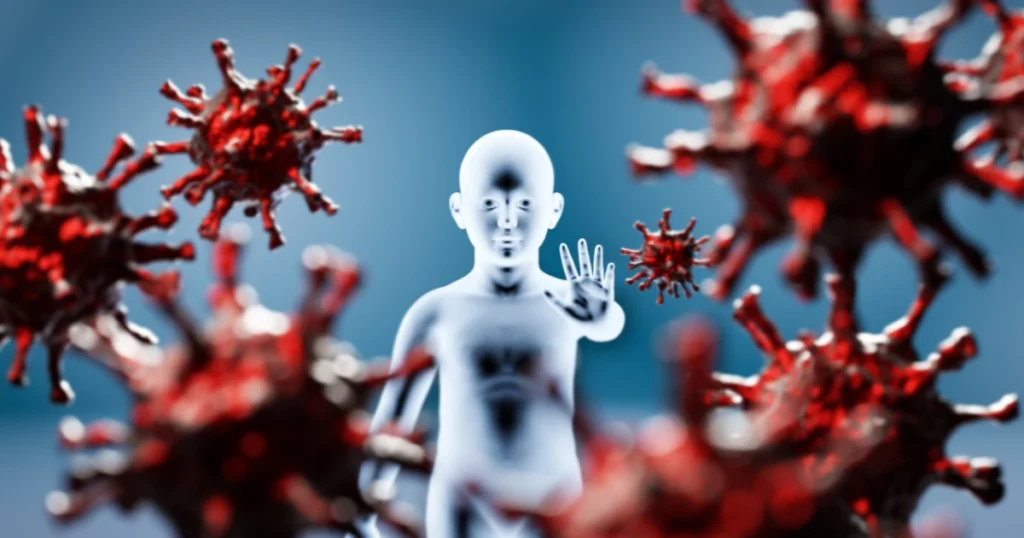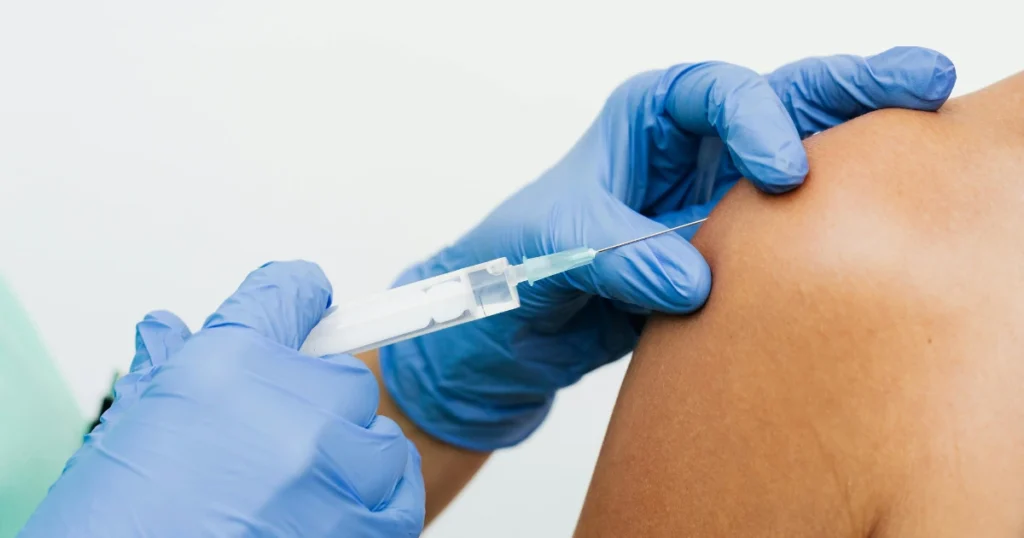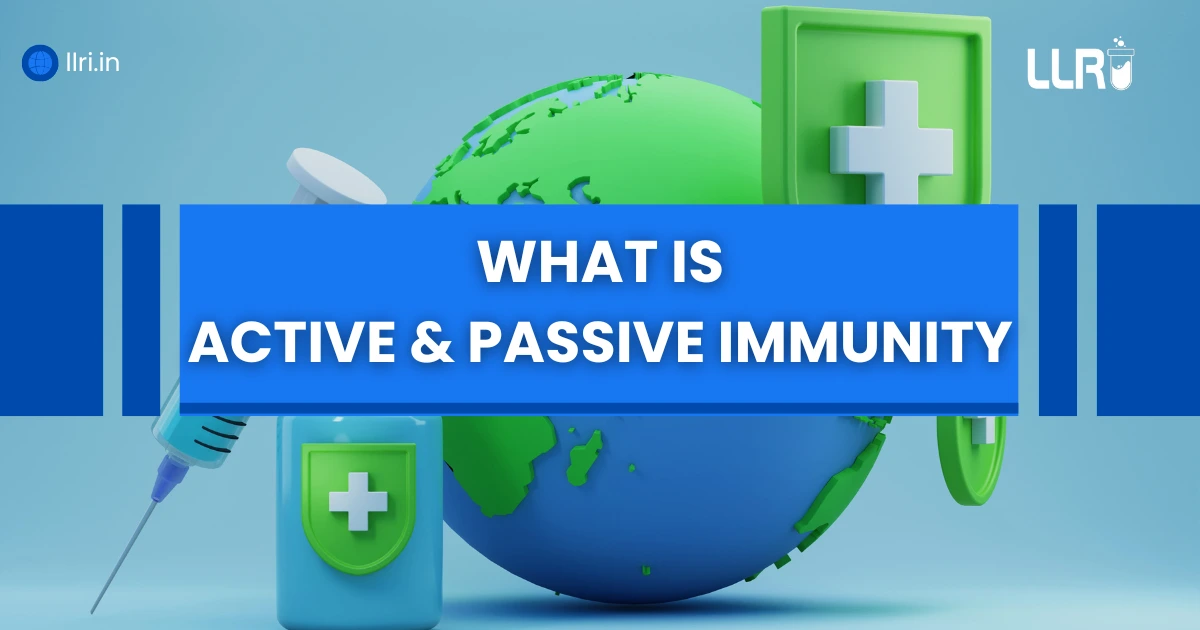What is Active and Passive Immunity: Think about the last time you recovered from the flu or after getting a vaccine. That invisible force that protected you? That’s your immunity. Doctors often say, “A strong immune system is your best doctor,” and they’re absolutely right.
The human immune system works in two distinct ways – active immunity and passive immunity. Both are essential, but they work differently. To understand this better, let’s start with the basics, shall we?
What is Active and Passive Immunity?
The question often asked is: what is active and passive immunity?
- Active Immunity: This happens when your own body produces antibodies after being exposed to a germ or through vaccination. It takes time to develop but usually lasts longer.
- Passive Immunity: This occurs when you receive ready-made antibodies from another source, like from your mother during pregnancy or through antibody injections. This protection is quick but temporary.
In simple terms:
- Active = Your body fights and remembers.
- Passive = You borrow protection for some time.

How Does Active Immunity Work?
When we talk about types of immunization active and passive, active immunity is the one that trains your body to defend itself.
There are two forms of active immunity:
- Natural Active Immunity
- Occurs when you catch an infection naturally and your body fights it.
- Example: Recovering from chickenpox – your body remembers the virus, so you don’t get it again.
- Artificial Active Immunity
- Gained through vaccines. The vaccine introduces a weak or dead form of the germ, training your immune system.
- Example: The polio vaccine.
Doctors at the Indian Council of Medical Research note that vaccines have saved millions of lives in India by building active immunity against diseases like polio, measles, and diphtheria.
How Does Passive Immunity Work?
Unlike active immunity, passive immunity provides instant protection but doesn’t last long.
Two major types:
- Natural Passive Immunity
- Passed from mother to child through the placenta and later through breast milk.
- Example: Newborn babies are safe from certain infections because of antibodies from their mothers.
- Artificial Passive Immunity
- Given through injections of ready-made antibodies (serum or immunoglobulin).
- Example: Rabies antiserum after a dog bite.
This form is like borrowing a friend’s umbrella in the rain – it protects you instantly, but you’ll need your own soon.
Read More: SAS in Clinical Research: Get 1 Month Free LLRI Course

Difference Between Active and Passive Immunity
Many students and readers ask, what is the difference between active and passive immunity? Let’s make it simple with a table:
| Feature | Active Immunity | Passive Immunity |
| Source of antibodies | Produced by the body | Received from outside |
| Onset of protection | Takes time (days to weeks) | Immediate |
| Duration | Long-lasting (sometimes lifelong) | Short-term (weeks to months) |
| Memory cells | Formed | Not formed |
| Examples | Polio vaccine, chickenpox recovery | Mother’s milk, rabies antiserum |
Types of Immunization: Active and Passive
Immunization is one of the most powerful tools in healthcare. The types of immunization active and passive include:
- Vaccination (active immunization) – Like BCG, polio, hepatitis vaccines.
- Serum therapy (passive immunization) – Like anti-venom injections after a snake bite.
According to WHO, India’s Universal Immunisation Programme (UIP) has been successful in reaching millions of children with active immunization.
Active Immunity and Passive Immunity Examples
Sometimes, examples make learning easier. Here are five clear examples of active and passive immunity:
- Chickenpox Recovery (Active Immunity) – Once you recover, your body remembers the virus.
- Polio Vaccine (Active Immunity) – A classic case of artificial active immunity.
- Mother’s Milk (Passive Immunity) – Breast milk contains antibodies that protect newborns.
- Rabies Antiserum (Passive Immunity) – Given immediately after a dog bite.
- Snake Antivenom (Passive Immunity) – Ready-made antibodies neutralise the venom quickly.
These active immunity and passive immunity examples show how both work hand in hand to safeguard our health.
In the modern world, where new infections keep emerging, knowing the difference between active and passive immunity is more important than ever.
- Vaccination campaigns in India rely heavily on active immunity.
- Emergency treatments, like rabies shots, depend on passive immunity.
As Dr. Soumya Swaminathan, former WHO Chief Scientist, said: “Vaccines remain one of the most effective tools in preventing disease.”
This highlights the value of types of immunization active and passive in today’s healthcare system.

On A Final Note…
Learning about active and passive immunity isn’t just for biology students, it’s something every individual should know. From vaccinations that protect millions in India to emergency treatments like anti-venoms, both forms of immunity are vital for survival.
So, the next time you hear the question – “what is active and passive immunity?” – you’ll know not just the definitions, but also the real-life examples, differences, and types of immunization active and passive that shape our health every day.
FAQs
Q1: What is active and passive immunity in short?
Active immunity is when your body produces antibodies; passive is when you receive them from outside.
Q2: Why is active immunity better than passive immunity?
Because it lasts longer and creates memory cells, protecting you in the future.
Q3: Do vaccines provide active or passive immunity?
Vaccines provide active immunity.
Q4: Can a newborn survive without passive immunity?
Not easily. A baby depends on mother’s antibodies during the first months of life.
Q5: Which is faster – active or passive immunity?
Passive immunity is faster but temporary; active takes time but is long-lasting.

